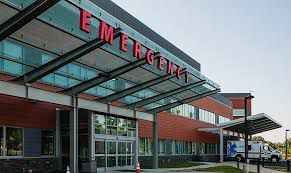Editorial: Rural communities face medical facility challenges

The ISD Editorial Board recognizes National Rural Health Day by discussing the lack of health care in Iowa’s rural communities.
November 20, 2019
Almost 60 million people, that’s nearly one in five Americans, live in a rural community. Yes, many of these people are farmers and ranchers, but many are also postmen and teachers and businessmen and women and nurses.
These people share a way of life. Rural communities are generally small. Everyone knows everyone. Everyone helps everyone, especially in times of need.
Iowa has many of these rural communities and it’s likely that you or a fellow student at Iowa State comes from one. Perhaps you’ve heard about the small town charm: never locking your doors, taking wrongly delivered mail to the right address or seeing stoplights that don’t change colors.
You’ve probably also heard about the challenges those in rural communities face, the biggest one being the weather and how it will impact crop yields. But one thing you might not have heard of is access to health care.
Today marks National Rural Health Day, a day set aside for addressing the lack of health care opportunities in rural communities and celebrating the power of rural.
Growing up hours away from a large medical facility — one that can perform life-saving surgery — is not uncommon for many students at Iowa State. Neither is driving great distances to have your child’s broken bone set. There are a myriad of reasons to visit the hospital, but many rural communities don’t have access to the same services as those in big cities.
That’s not to say that these rural communities don’t have doctors and hospitals — some do, some don’t. What it is saying is that services are often limited both in scope and capacity.
Why?
It’s a financial burden. Rural communities don’t have the population to support a medical facility in the same way urban and suburban areas do. It’s impossible to justify an orthopedic surgery wing addition to a clinic that serves 5,000 people, but it’s very likely one of those 5,000 will need orthopedic surgery.
It’s also a lifestyle. People from rural communities often pride themselves on being tough, only visiting a doctor when absolutely necessary. That’s great for those people who can handle broken bones and the flu, but presents great challenges when a soon-to-be mother develops an infection during labor, or a small child suddenly has appendicitis.
So how do rural communities handle the lower access to health care?
Many rural hospitals have specialists on site on specific days of the week. The hospital schedules all patients in need for that day to be seen by the specialist. Doctors in those communities make themselves more available, working even when they aren’t at the hospital.
And rural communities get by. But it’s important to recognize that the privileges many of us grew up with are not universal. Not in third world countries, but here in Iowa, there are people with less access to health care. And until the American healthcare system changes, it will likely stay that way.
















